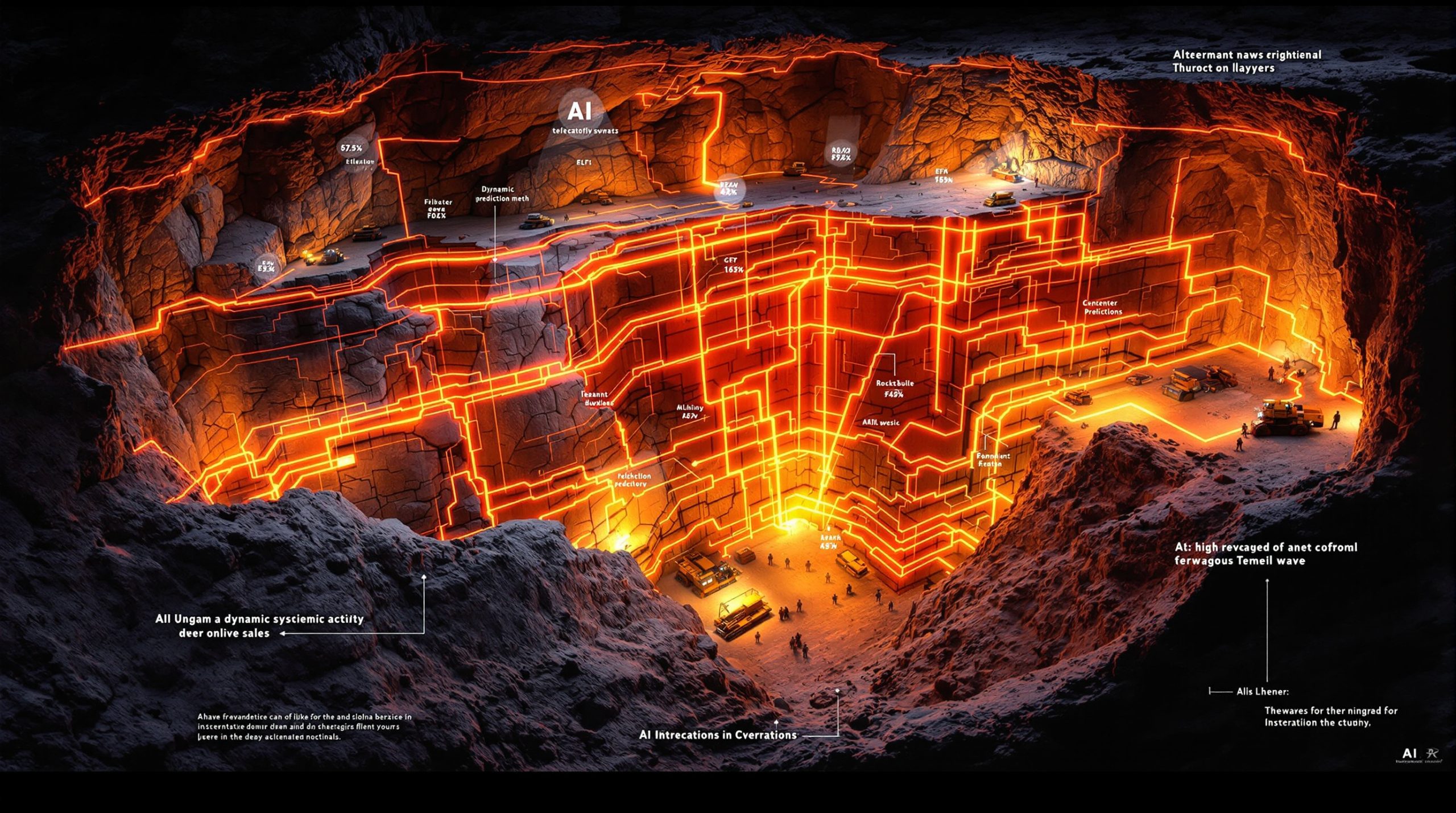Australia's Critical Minerals Price Floor Initiative: Strategic Implications and Market Impact
Australia is advancing a groundbreaking initiative to establish price floors for critical minerals, positioning itself as a strategic alternative to China in global supply chains. This policy shift represents a significant evolution in how Western nations approach critical mineral security and reflects growing concerns about supply chain vulnerabilities in technologies essential for clean energy transition security and defense applications.
What is Australia's Critical Minerals Price Floor Proposal?
Australia's Resources Minister Madeleine King has unveiled plans to create a mechanism providing price certainty for critical mineral producers through national offtake agreements. This voluntary framework will focus specifically on minerals with demonstrated end-uses in defense and strategic technologies, with special emphasis on heavy rare earth elements such as terbium and dysprosium.
"Pricing certainty means companies and investors are less exposed to volatile markets and prices, which are opaque and prone to manipulation," Minister King explained when announcing the initiative. "Mechanisms for an appropriate price floor are under active consideration."
The initiative will leverage Australia's substantial A$1.2 billion ($775.08 million) strategic minerals reserve, creating a comprehensive approach to mineral security that combines stockpiling with price stabilization. This dual strategy aims to provide both immediate supply security and long-term production viability.
Unlike traditional subsidy programs, the price floor will operate through voluntary participation frameworks, allowing producers to opt-in rather than imposing blanket regulations across the sector. This approach maintains market flexibility while providing critical support where strategically necessary.
Strategic Policy Evolution: Australia's price floor mechanism represents an evolution from purely market-based approaches toward strategic industrial policy in critical minerals—a sector increasingly viewed as essential to national security.
Why is Australia Considering a Price Floor Mechanism?
The initiative addresses several interconnected challenges in the critical minerals landscape:
Market Dysfunction: Current pricing mechanisms for many critical minerals remain opaque and susceptible to manipulation. Without transparent price discovery, Western producers struggle to secure financing for new projects despite growing demand.
Chinese Dominance: Despite holding significant resources, Western nations have failed to develop processing capacity for many critical minerals. As Minister King noted, "prices for some metals like rare earths have been too low to fund processing capacity in Western nations, meaning that China has remained the world's dominant supplier."
Investment Uncertainty: The combination of price volatility and market opacity has created a significant barrier to capital formation in the sector. Projects with strong technical fundamentals often fail to secure financing due to uncertainty about future price environments.
Strategic Vulnerability: The concentration of processing capacity within a single geopolitical sphere creates unacceptable risks for defence materials strategy and clean energy transition plans.
By establishing price floors, Australia aims to create the conditions for a diverse, resilient supply chain for technologies ranging from electric vehicles to precision-guided munitions, all of which depend on secure supplies of specific critical minerals.
How Does This Compare to the US Approach?
Australia's initiative follows a precedent established by the United States through its landmark deal with MP Materials, America's only rare earths producer. That "multibillion-dollar deal" established a minimum price guarantee structure specifically for rare earth magnets production, creating a financial foundation for domestic manufacturing capacity.
While both approaches reflect a growing recognition that critical minerals markets require intervention to function effectively, Australia's framework appears more comprehensive in several respects:
Mineral Coverage: Where the US deal focused specifically on rare earth magnets, Australia's initiative encompasses a broader spectrum of critical minerals, potentially including battery materials and other technology metals.
Implementation Mechanism: Australia has emphasized that its program will operate through national offtake agreements rather than direct subsidies, potentially creating a more market-oriented approach.
Voluntary Participation: By establishing a voluntary framework, Australia's approach may avoid some of the market distortions that can occur with mandatory pricing mechanisms.
Integration with Reserves: Australia's initiative explicitly connects to its strategic reserves program, creating a more comprehensive approach to supply chain security.
Both initiatives signal a fundamental shift in how Western governments approach critical minerals, moving from hands-off market approaches to strategic industrial policy designed to counter market failures and geopolitical vulnerabilities. This represents a big pivot strategy in how governments view mineral security.
What Critical Minerals Will Be Prioritized?
While the complete list of minerals covered under the price floor mechanism remains under development, several priority categories have emerged:
Heavy Rare Earth Elements: These elements, characterized by higher atomic weights within the 17-element rare earth group, command premium prices but face severe supply constraints outside China. Terbium and dysprosium have been specifically highlighted due to their critical applications in permanent magnets used in electric vehicles and wind turbines.
Defense-Critical Elements: Minerals with direct applications in defense technologies will receive priority consideration, reflecting the national security dimensions of supply chain security.
Emerging Technology Enablers: Elements essential for next-generation technologies, particularly those supporting decarbonization efforts, will likely be included in the framework.
In addition to these categories, Australia has demonstrated interest in developing supply security for antimony, bismuth, germanium, and indium through its A$87 million support package for Trafigura's Nyrstar metals processing operations. These elements, while less prominent in public discourse, play critical roles in electronics, semiconductors, and specialized metallurgy.
The prioritization process will likely consider both supply risk factors and Australia's competitive advantages as a producer, focusing resources where they can most effectively address market vulnerabilities.
How Have Markets Responded to the Announcement?
The announcement triggered immediate positive market reactions, with Australian-listed rare earths companies experiencing significant valuation increases:
- Lynas Rare Earths: Shares rallied more than 6% to reach their highest level in 13 years
- Iluka Resources: Stock jumped nearly 10% on the news
- Arafura Rare Earths: Gained approximately 10% following the announcement
This market response reflects growing investor recognition that government policy now views these companies as strategic national assets rather than purely commercial enterprises.
"I think the market is now viewing rare earths miners and processors as strategic assets given the government involvement," explained Luke Winchester, portfolio manager at Merewether Capital, highlighting the shifting investor perception of the sector.
The particularly strong response for Lynas reflects its unique position as the first producer of heavy rare earths outside China, having started production earlier this year. This achievement represents a critical milestone in diversifying global supply chains for these strategic materials.
The market reaction demonstrates that investors are increasingly factoring government policy support into their valuation models for critical minerals companies, potentially reducing the risk premium previously applied to these projects.
What Economic Implications Could the Price Floor Create?
The price floor mechanism will create complex economic ripple effects throughout global supply chains:
Producer Benefits:
- Reduced investment risk for new projects and expansions
- Improved ability to secure project financing
- Enhanced long-term planning capabilities
- Protection against predatory pricing practices
Downstream Considerations:
- Potential increased costs for manufacturers in sectors like automotive and electronics
- Possible price increases for end consumers of technology products
- Incentives for material efficiency and recycling innovations
- Acceleration of substitute material research
The initiative represents a deliberate trade-off between near-term input costs and long-term supply security. While manufacturers may face higher material costs initially, the development of diverse supply chains reduces vulnerability to future supply disruptions or price manipulation.
Economic Perspective: The price floor mechanism effectively treats supply chain security as a public good that markets alone cannot adequately provide, justifying intervention to correct this market failure.
How Does This Fit Into Australia's Broader Critical Minerals Strategy?
The price floor initiative represents one component of Australia's comprehensive approach to critical minerals development:
Financial Commitments:
- A$1.2 billion strategic minerals reserve
- A$87 million support package for Trafigura's Nyrstar operations
- Additional investments in processing capabilities and research
Policy Framework Integration:
- Alignment with Australia's Critical Minerals Strategy
- Coordination with defense industrial base development
- Support for domestic manufacturing capabilities
Processing Capacity Development:
- Support for Nyrstar's assessment of antimony, bismuth, germanium, and indium production
- Expansion of rare earth separation capabilities
- Development of advanced materials manufacturing
This multifaceted approach addresses the entire value chain from extraction through processing to manufacturing, recognizing that security requires more than simply mining raw materials.
The strategy positions Australia not merely as a supplier of raw materials but as a sophisticated processor and manufacturer of critical mineral products, capturing more value domestically while strengthening supply chain security for allies. Furthermore, the approach follows similar paths to Trump's minerals order in prioritizing domestic supply chains.
What Challenges Might the Price Floor Mechanism Face?
Despite its strategic rationale, the price floor mechanism faces several significant implementation challenges:
Price Determination Complexity:
- Establishing appropriate floor prices across diverse mineral markets
- Accounting for production cost variations between projects
- Balancing producer viability with fiscal responsibility
- Creating formulas that adjust appropriately to changing market conditions
Market Distortion Risks:
- Potential overproduction if prices set too high
- Possible strategic gaming of the system by producers
- Impact on secondary markets and recycling incentives
- Unintended consequences for related mineral markets
International Considerations:
- Potential trade disputes over market intervention
- Questions about WTO compliance and free trade agreements
- Coordination with allied nations implementing similar programs
- Possible retaliatory measures from dominant market players
Administrative Burden:
- Creating transparent and fair participation criteria
- Monitoring compliance and program effectiveness
- Adjusting mechanisms as market conditions evolve
- Managing fiscal commitments in changing budget environments
Addressing these challenges will require sophisticated market design, international coordination, and careful implementation to maximize effectiveness while minimizing unintended consequences. Additionally, Australia may need to look at CRM facility insights from European models to develop effective approaches.
Which Australian Companies Stand to Benefit Most?
The price floor mechanism will create particularly significant opportunities for established producers and near-term developers with advanced projects:
Lynas Rare Earths has positioned itself as the Western world's premier rare earths processor, recently becoming the first producer of heavy rare earths outside China. This milestone achievement places Lynas at the forefront of supply chain diversification efforts and makes it a natural beneficiary of price support mechanisms.
Iluka Resources, a diversified mineral sands producer, has been developing significant rare earths capabilities through its Eneabba project. The company's established operational expertise and strong balance sheet position it well to capitalize on the new policy environment.
Arafura Rare Earths is advancing its Nolans Project, a potential source of neodymium and praseodymium crucial for permanent magnets. The price floor could significantly enhance project economics and accelerate development timelines.
Beyond these established players, the initiative creates opportunities for emerging developers focused on:
- Battery minerals with strategic applications
- Technology metals with processing bottlenecks
- Elements with concentrated supply risk profiles
- Minerals with growing demand-supply imbalances
The greatest benefits will likely accrue to companies with projects already in advanced development stages, as they can most quickly respond to the improved economic environment created by price support.
What's Next for Australia's Critical Minerals Sector?
As the price floor initiative moves from concept to implementation, several developments will shape the sector's evolution:
Policy Refinement:
- Detailed implementation guidelines specifying eligible minerals and participation criteria
- Specific price determination methodologies for different mineral categories
- Integration with existing critical minerals strategy elements
- Potential additional support measures for processing and manufacturing
Industry Response:
- Acceleration of feasibility studies and project development timelines
- Formation of strategic partnerships with end-users in defense and technology sectors
- Increased investment in downstream processing capabilities
- Enhanced exploration for priority minerals with supply constraints
International Coordination:
- Alignment with allied nations' critical minerals initiatives
- Harmonization of technical standards and certification processes
- Coordination on stockpiling and price support mechanisms
- Joint technology development for processing innovations
Market Evolution:
- Recalibration of project economics under price floor scenarios
- Increased investor interest in critical minerals exploration
- Development of more sophisticated price discovery mechanisms
- Growth of specialized financial instruments for the sector
These developments will unfold against a backdrop of growing competition for critical mineral resources and processing capacity, as nations worldwide recognize their strategic importance for both economic and security objectives.
Frequently Asked Questions: Australia's Critical Minerals Price Floor
When will the price floor mechanism be implemented?
The Australian government is actively developing implementation details, but no specific timeline has been publicly announced. The complex nature of the mechanism suggests a phased implementation approach is likely, potentially beginning with a pilot program focused on specific high-priority minerals before expanding to broader coverage.
Which specific minerals will be covered?
While the complete list remains under development, the government has specifically mentioned heavy rare earth elements like terbium and dysprosium as priorities. Other candidates likely include minerals with demonstrated defense applications, elements facing severe supply constraints outside China, and materials where Australia possesses competitive production advantages.
How will price floors be determined?
The government has not disclosed its specific methodology, but effective price floors would need to consider production costs across different operations, strategic value of the minerals, prevailing market conditions, and price volatility patterns. The mechanism will likely include formulas for periodic adjustment rather than static price points.
Will participation be mandatory for Australian producers?
Minister King has explicitly stated that participation will be voluntary, operating through national offtake agreements rather than regulatory mandates. This approach provides flexibility for producers while ensuring government support focuses on strategically important projects.
How does this compare to traditional subsidies?
Unlike direct subsidies that provide payments regardless of market conditions, price floors only activate when market prices fall below the established threshold. This design provides security against downside risks while allowing producers to capture upside potential in strong markets, potentially making it more fiscally sustainable.
Australia's price floor initiative represents a significant evolution in critical minerals policy, reflecting growing recognition that these materials require strategic approaches that balance market forces with national security imperatives. As implementation details emerge, both producers and consumers of these vital materials will need to adapt to a new paradigm that prioritizes supply chain security alongside traditional market considerations.
Want to Get Ahead of the Next Major Mineral Discovery?
Discovery Alert's proprietary Discovery IQ model instantly notifies investors of significant ASX mineral discoveries, transforming complex data into actionable investment insights within minutes of announcements. Discover why major mineral finds can generate exceptional returns by visiting our dedicated discoveries page.




